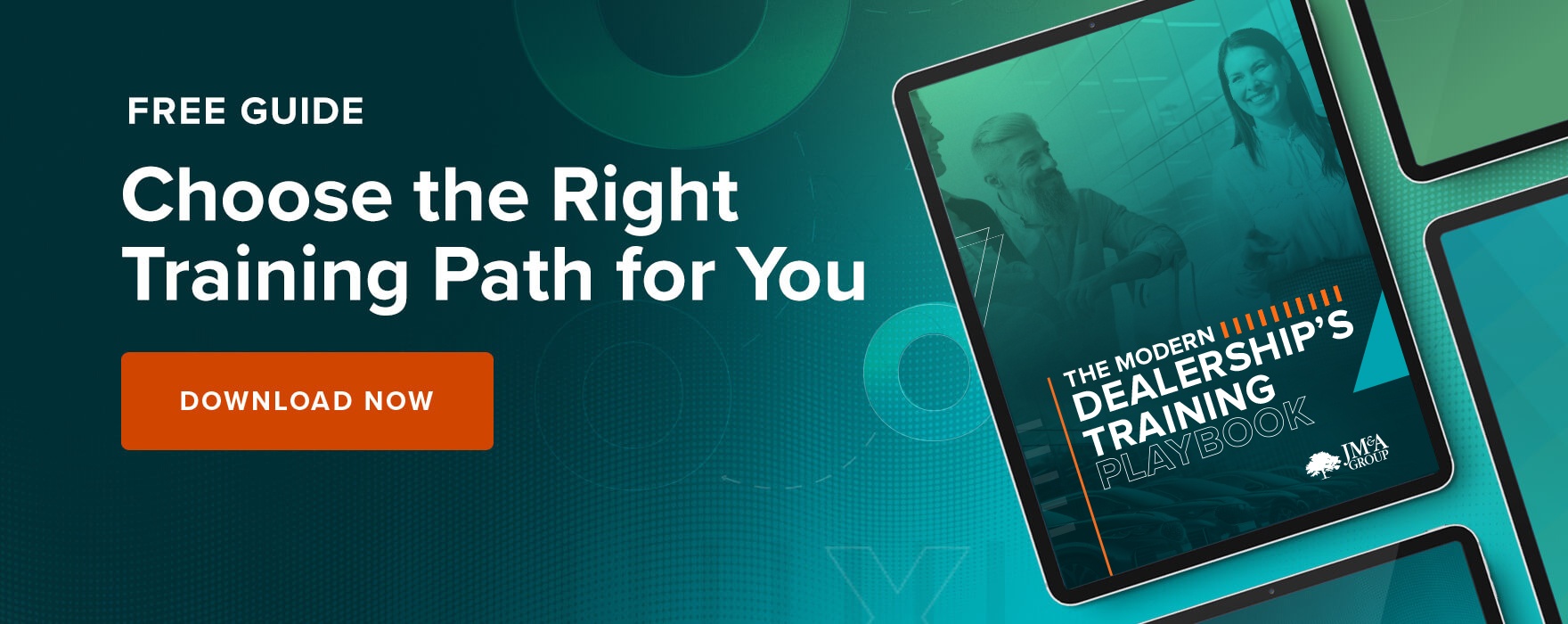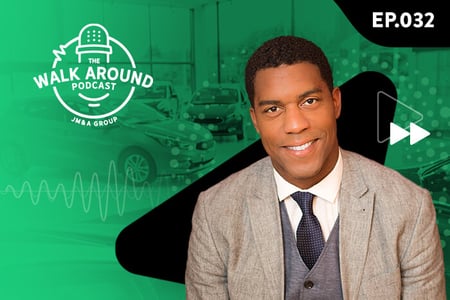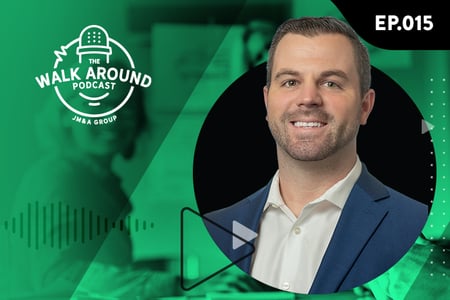How Dealerships Can Sell Across Any Generation
Reaching your audience in a sincere and honest way, no matter the approach, is crucial to gaining the trust and confidence of your prospective customer.
Communication is one of the most important pieces of the sales puzzle, let’s dive in and explore how you can use communication to improve your sales process. Salespeople often employ what is known as the “The Read.”
"The Read" is a tactic often used by police officers, military units, and salespeople alike and takes place long before a salesperson ever makes direct contact with a customer. It is used to categorize and "read" individuals based on things like body language, age, facial expressions, and tone before you make the initial contact with them.
For law enforcement and military personnel, this is useful because it allows them to evaluate a situation and in turn know how to proceed. Using this tactic, they can adjust their course of action appropriately and mitigate any obstacles.
The same principle applies to salespeople and marketers when facing prospective customers. Evaluating an individual or group of people allows you to adjust the way that you approach, and ultimately, attempt to sell or qualify them as a lead.
Think: soft sell or hard sell.
By understanding what makes your customer tick, how they like to interact and what their buying preferences are, you can start the conversation one step ahead. By tailoring your message and approach, you make your customer feel valued, which is a key step in creating a relationship built on trust and transparency.
In a seemingly fully digital world, relationships are still the number one driver of new and recurring business.
For example, if someone in your showroom is unsure, confused, or hesitant, you can customize your approach to become more educational and reassuring. This approach, opposed to a blanket sales pitch, would be much more effective for this particular client, thus increasing your chances of selling while saving precious time.
The same principles apply in a situation where you are facing a customer who has done the research, is educated about the product, and understands how the process works, which is more common than not with today’s modern car buyer. In fact, about 80% of shoppers now begin the process online rather than in-store.
For a customer like this, you would adjust your approach in a way that acknowledges the customer’s familiarity with the product and use that to your advantage.
The Different Generations and How to Leverage Those Differences to Appeal to Them Tactically
Another advantage of using “The Read” as a sales tactic is that it allows you to identify potential customers' generational placement. Why does generational placement matter, you ask? Well, the generation gap in today's society is polarizing. While this isn’t a hard and fast rule across the board, older and younger generations are divided when it comes to technology, communication, partisanship, and car buying.
Buying habits across generations can be uniquely different, and understanding how each generation reacts to your process and car buying experience can help you leverage that information.
Every generation has different preferences when it comes to communicating, which can complicate the buyer’s journey. Dealerships that rely on “old-school” sales tactics and service are often less successful when guiding a potential buyer through the process. The ability to customize a sales experience is minimized when the communication and understanding needed is not present. Cross generational communication skills are a huge plus and a tool that everyone on your team should have, or work towards obtaining.
Let’s discuss the different generations you will encounter in your showroom and some of the trends and behaviors they may exhibit.
Baby Boomers
Baby Boomers are people born from 1946 to 1964 during the post-World War 2 "baby boom," hence the term. The age range, therefore, is anywhere from 56 to 74 years old. They are the highest consumers of traditional media and share in the post-world war optimism.
Financially, this generation is contemplating or managing retirement. Since life expectancies have been steadily on the rise in the past decade, older members of this generation continue to drive and buy new automobiles.
Another important thing to note is that the Baby Boomer generation is staying in the workforce for a longer period of time compared to past generations. This is great information to have as this implies that they will usually have a more flexible budget for buying a vehicle.
They prefer traditional methods of doing business; they grew up in a time where a firm handshake and verbalized commitments were how deals were made. A face-to-face exchange and phone call equates to attentiveness and respect and lets baby boomers know that you are transparent and upfront. They value the in-person relationship over everything.
Generation X
Includes anyone born between 1965 and 1980. They often share the same values as Baby Boomers and make up a huge portion of the U.S. population! 65 million people are considered Generation X, making up 34% of the U.S. workforce and generating 63% of the total U.S. income according to a study by Lundmark! Those numbers tell us that, more often than not, this is who is walking into your dealership.
They prefer conversations by phone and email but are also open to an in-person conversation. This generation also ranks higher compared to others when it comes to brand loyalty. A lasting impression and good experience will most likely convince them to further their relationship with you and your organization.
Millennials
Millennials are people born between 1981 and 1996 and represent a complex and often misunderstood segment of the population. While many businesses struggle to understand millennial buying habits and train of thought, those who have succeeded have found great success.
Millennials have greatly contributed to the technological changes that we see in the world today and the role it plays for businesses. 65% of Millennials interact with brands primarily through social media and of the 40 million in the workforce, most of them prefer instant messaging and mobile apps to communicate.
While they often get a bad rap, they are also the most educated generation to exist, with 63% of millennials having earned their bachelor's degree. According to Time Magazine, by the year 2025, 3 out of 4 workers globally will be Millennials.
Back in 2012, a whitepaper produced by Bazaar voice estimated that Millennials will have more spending power than any other generation. Now we are seeing how accurate that estimation was. That same study found that 40% of Millennials will not purchase a car without first viewing user-generated content, meaning that consumer opinions and reviews are now more important than ever before.
Generation Z
The youngest generation of today’s consumers, made up of people born between 1996 and 2010. This generation shares many of the same characteristics and values of Millennials. However, the big difference between the two is that Generation Z has not experienced a pre-internet/technology period.
They are the first true digital and internet natives that won’t fully grasp or understand what life was like without the heavy influence of technology. They rely on Google for most things and will almost always conduct research from multiple sources before purchasing a product. An important tip in regard to Generation Z is to never count them out.
They are young now, but this generation’s buying power sits at $44 billion and will quadruple in the next few years! They avoid traditional financial services and products, which is important to know especially from an F&I sales perspective.
As a dealer, this generation may produce some initial obstacles for you, but it can also be a big opportunity to cater to this demographic through a customized, yet focused, buying process. They love everything digital including social media and text messaging and will prefer a buying process that has some component of technology integrated into it.
Support Your Team to Realize Results
As a leader it is important to empower your team with the right tools to get the job done. By learning and understanding the generational differences and preferences, using customized and efficient sales tactics, and understanding the psychology behind why each generation behaves in the manner they do, your team can:
- Plan and utilize tactful communication styles to different audiences at any age
- Develop effective questioning and interview skills to classify potential customers
- Personalize customer experiences and cater to each generation differently
- Minimize sales resistance by getting ahead of the curve
- Relate to each generation on a personal level
As you know, great leadership often comes down to understanding how to deal with different personalities and backgrounds in a flexible and adaptable way; it is what separates the "good" managers from the "great" ones. It is a skill that, with thoughtful practice, can be mastered to enhance sales and a cohesive work environment.
Summary
At the end of the day, the success of your dealership relies heavily on the fundamental sales skills of the individual associate. Knowing who your audience is and catering to their needs will differentiate you from the competition. Do your research, practice new techniques, leverage training programs and always be prepared to meet the needs of whoever walks through your dealership doors, regardless of their generational classification.









